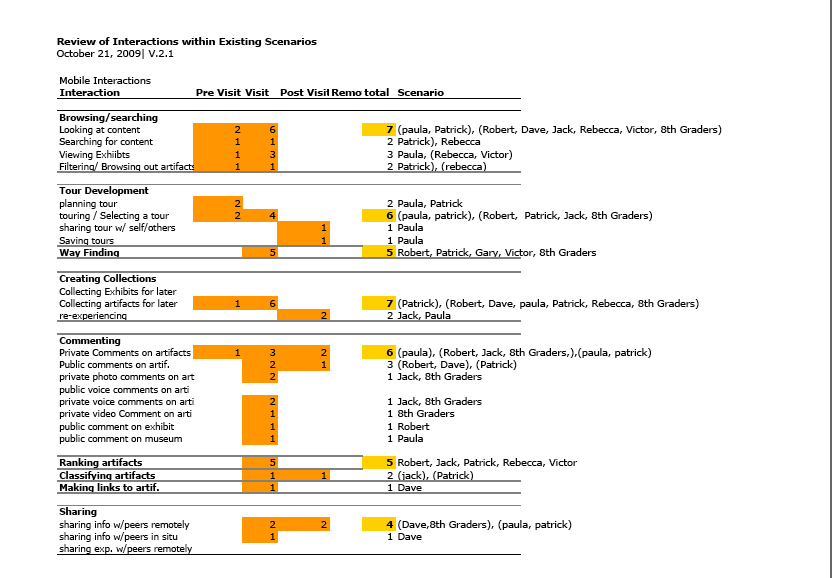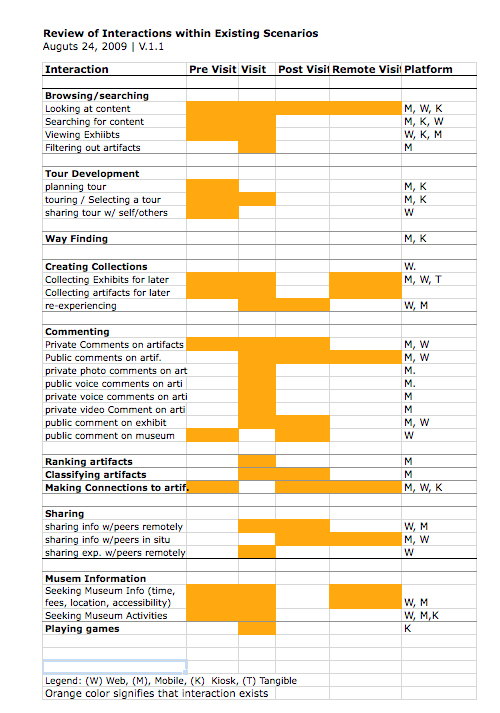Scenario interaction overview
The following is an overview of interactions that have been identified within the existing scenarios.
Interactions breakdown based on visit stage and technologies (showing frequency)
This document looks at the frequency of interactions that are are discussed within the scenarios. It's purpose is to elucidate how the team is considering interactions on the various platforms and to help prioritize the development of components to support such interactions
Download it here: Interactions document as PDF
Interactions within all systems at different points of the visit
The purpose of this document is to demonstrate how some interactions span the various platforms, and may help the design team in understanding that these overlapping components should contain similar functionality, regardless of their platform. This is beneficial from both a development and design perspective, as a component (ie. commenting) won't need to be developed differently for the various platforms, and likewise the interaction design of a component on one platform can be re-used in another platform (despite the look and feel being different / aka css skinning), hence reducing future duplication of wireframing, prototyping, and usability testing of components that we are thinking about (in the scenarios)
Additionally, the document will help to identify what kinds of interactions occur during different stages of the visit (pre, during, post), regardless of the platform. This is particularly useful in understanding the model for the visit stages (eg. Pre visits should contain a set of interactions that the components we develop should address).
Download it here: Interactions document in exel
Scenario breakdown based on ontology
Below is a document outlining areas that have been explored in our scenarios. The purpose of this document is to outline how we have been thinking about the interactions in the multitude of spaces (from the ontology).
From this document, it is possible to understand where there is overlap, and from this, developing models for interaction (ie. Pre-planning A school visit to art museums)
Download it here: Areas Explored in exel

